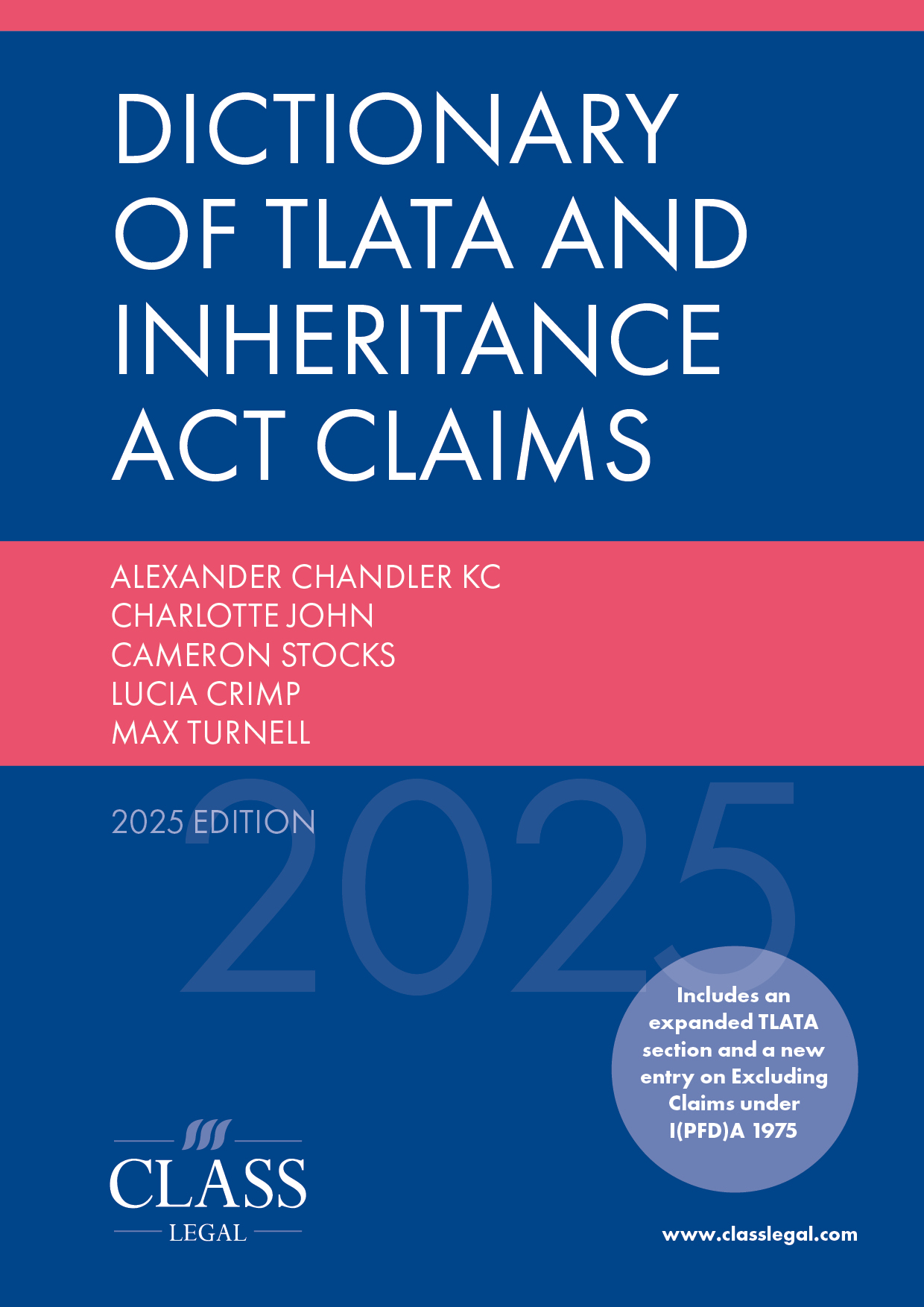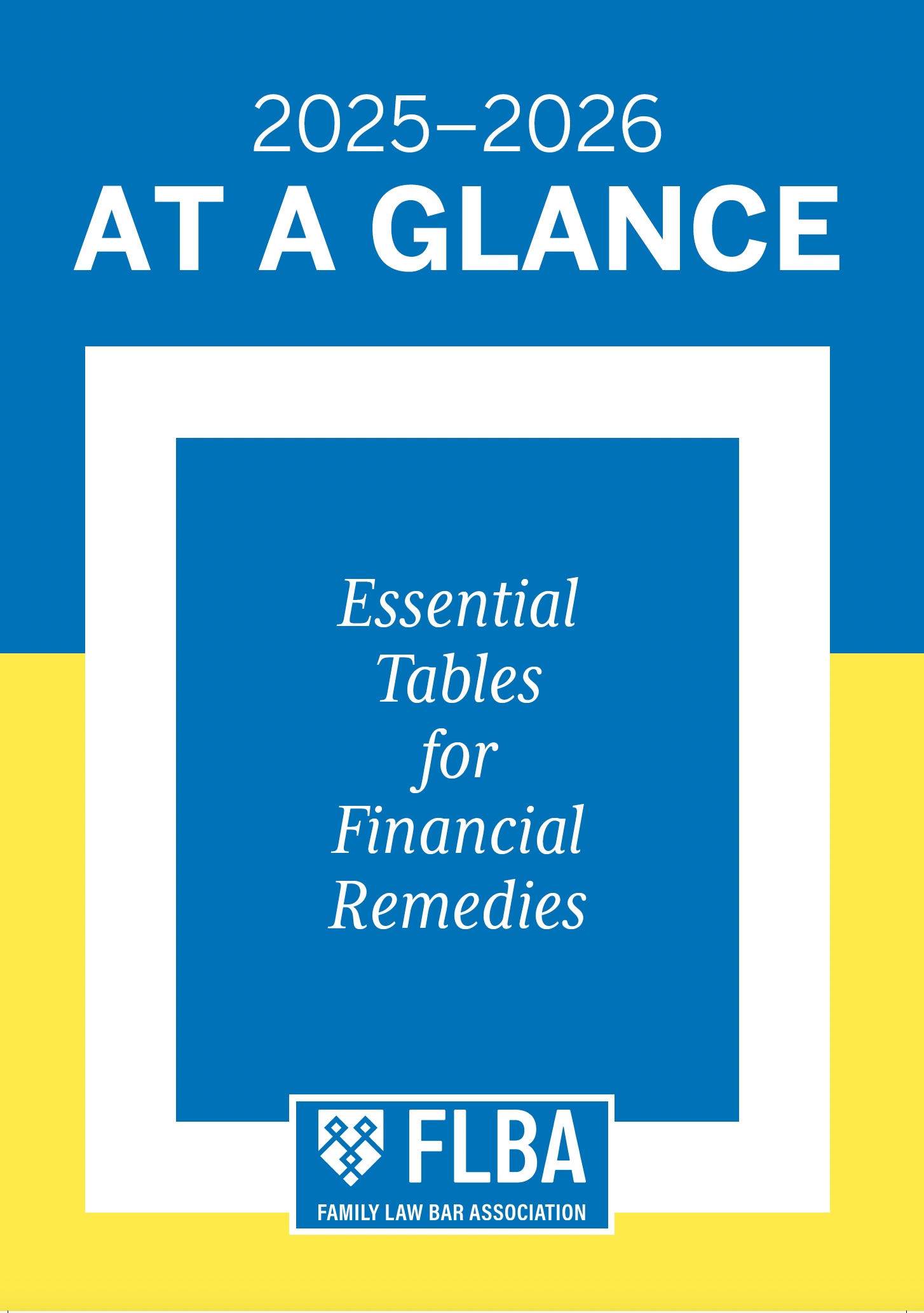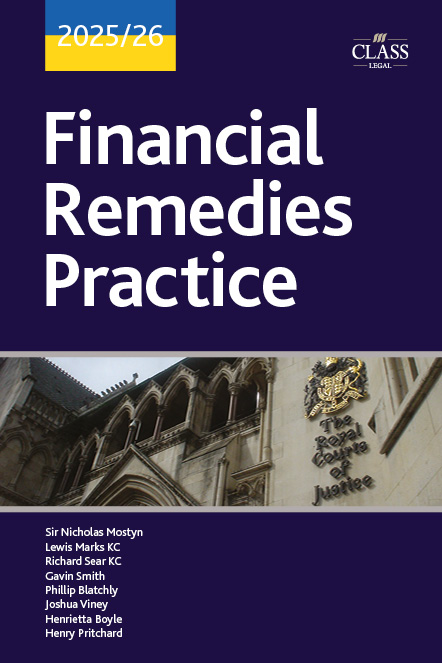
What’s in a WhatsApp: Can a WhatsApp Message Transfer a Property?
Published: 30/06/2025 06:00

The decision of Deputy Insolvency and Company Courts Judge Frith (the judge) in Reid-Roberts and Burke v Mei-Lin and Gudmundsson [2024] EWHC 759 (Ch)1 is one of the first published cases since the decision of the Court of Appeal in Hudson v Hathway [2022] EWCA Civ 1648, [2023] KB 345 to deal with what constitutes a disposition of a beneficial interest in land by means of signed writing.
This case centred on communications by WhatsApp, and an argument that there had been an effective transfer of a beneficial interest in the former matrimonial home by a series of WhatsApp messages. In this case, that argument failed. Nevertheless, the case raises some interesting issues about what amounts to a disposition, and the manner in which a message sent by WhatsApp might be ‘signed’, so that the message amounts to ‘signed writing’ for the purposes of s 53(1)(a) and (c) Law of Property Act 1925 (1925 Act).
The facts
The applicants were the trustees in bankruptcy of the husband Mr Gudmundsson (Mr G), and they applied for an order for sale of what had been the matrimonial home of him and Ms Mei-Lin (Ms L). By the time of the trustees’ application, Ms L and Mr G were divorced. Ms L was still living in that home with the two children of the marriage, aged 14 and 10. The children and Ms L had suffered psychological trauma owing to Mr G’s abusive and violent behaviour during the marriage. Mr G’s business in banking and investment management had failed, and he was subsequently made bankrupt, apparently owing several million pounds, and had been sentenced to two terms of imprisonment (14 months for contempt of court, and 12 years for fraud offences).
Ms L and Mr G separated in 2016 after a 10-year relationship and 7-year marriage. In 2017 Ms L began divorce and financial remedies proceedings. By March 2018, the Family Court had made an order for the children to live with her and spend time with Mr G subject to a drug-testing regime. In December 2018, there were discussions about a possible settlement of her application for financial remedies. These included an exchange of emails and WhatsApp messages on 3 December 2018, as detailed below. Those did not lead to a concluded agreement and the financial remedy proceedings continued.
On 20 February 2019 the financial remedy hearing ended, with judgment expected for 6 March 2019. Judgment was, however, delayed on account of the judge’s pressure of work. It was almost ready to be handed down by 22 September 2019, but at that point the court was told by Ms L’s lawyers of certain developments, including Mr G’s business being closed down and him being sent to prison. The court therefore sought further submissions. Mr G asked for more time. During that time, he had a statutory demand served on him, followed by a bankruptcy petition, and he was made bankrupt on 26 February 2020. The judgment was eventually handed down on 4 March 2020 – some 13 months after the substantive hearing. It was only at the March 2020 hearing that Mr G deigned to tell the court and Ms L that he had been made bankrupt 2 weeks earlier.
The Family Court judge had decided that the entire equity in the family home – held in joint names and owned in equal shares – should be transferred to Ms L. However, because of the bankruptcy, the order for transfer into Ms L’s sole name was ineffective: Mr G no longer owned a half share – his share now belonged to his trustees in bankruptcy. Ms L was also awarded her costs, but those costs had not been paid and she was left to claim in his bankruptcy.
Subsequently, Ms L applied to annul the bankruptcy, but her application was dismissed with costs. At that point, in March 2021, Ms L told the court, through her counsel, that the house would be put on the market straight away. However, the house remained unsold, and so in February 2023 the trustees applied for an order for sale and a declaration that the equity was owned in equal shares by them and Ms L. That application came before the judge on 23 February 2024.
Ms L had always been seeking to argue that she should not have to give up possession, relying on the ‘exceptional circumstances’ proviso in s 335A Insolvency Act 1986. Under s 335A(3), ‘the court has to assume, unless the circumstances of the case are exceptional, that the interests of the bankrupt’s creditors outweigh all other considerations’. The mere fact that the other co-owner would not be able to house herself and the children with her half share of the equity is not an exceptional circumstance: something more is needed to defer sale.
The issues for the judge
However, counsel for Ms L, instructed through Advocate/the Bar Pro Bono Unit, also raised a new point. He argued that the email and WhatsApp messages in December 2018, prior to the financial remedy final hearing, had amounted to a disposition of Mr G’s interest in the family home to Ms L. There were three main issues for the judge to decide:
(1) First, was it open to Ms L to run the argument of the disposition of that interest? The judge held that it was – there was no estoppel, and had been no formal admissions that she had only a 50% share that were binding on Ms L.
(2) Secondly, if so, had there been a disposition of Mr G’s interest to Ms L under s 53(1)(c) 1925 Act?
(3) Thirdly, if that argument failed, were there exceptional circumstances under s 335A(3) 1986 Act, allowing the court a discretion not to order an immediate sale, and if so, how should that discretion be exercised? The judge found there were exceptional circumstances, and deferred sale until 2032 when the younger child would be 18.
The second issue was described as the Hudson v Hathway issue, namely whether the WhatsApp and email messages amounted to a disposition for the purpose of s 53(1)(c) 1925 Act. In any case where this issue arises, there are two questions: first, does the communication amount to a disposition, and secondly, is any such disposition effected by signed writing? The judge referred to Hudson at [32], where Lewison LJ distinguished between executory contracts for the sale of interest in land, which are governed by s 2 Law of Property (Miscellaneous Provisions) Act 1989 (1989 Act), and transactions which amount to an immediate disposition of an interest in land, which are governed by s 53(1)(c) 1925 Act.
Hudson v Hathway was a cohabitation/TLATA dispute – the parties were not married. Mr Hudson had sent emails to his former partner, Ms Hathway, by which it was said he had disposed of his interest in their former family home. Mr Hudson wrote his name at the end of each of these emails: ‘Lee’. The Court of Appeal in Hathway concluded that: (1) the emails together amounted to an immediate disposition of his interest (by way of a release of his rights as a beneficial joint tenant), and not merely an agreement or willingness to transfer at a later date; and (2) emails were ‘writing’, and his name written at the end of the email was a signature, having been added with the intention to authenticate the document.
The communications in this case
By WhatsApp:
(1) Mr G: ‘I suggest that the responsibility of taking care of the kids goes to u 100%, then I can sign over my share of southcote road to u without any complications as I don’t need any accommodation in London.’
(2) Mr G: ‘Please let me know that u r happy with this and we can then close the financial part of the divorce this week.’
(3) Ms L: ‘with some monthly maintenance then ok.’
(4) Mr G: ‘It goes without saying the monthly maintenance for the kids in accordance with CMS.’
(5) Ms L: ‘Are you saying I have full custody of kids?’
(6) Mr G: ‘Yes that is what I was saying, moving out of London for good and out of the kids life.’
(7) Ms L: ‘I will take house and full custody of kids. And my paintings [in] Iceland should be returned then is done.’
By email:
(8) Ms L: ‘Dear adudun. I will have full custody of kids and take the house. This week we shall finish the paperwork According to what we agreed. You are welcome to visit kids and I will never stop you seeing them. Just to let you know. Please email your lawyer and me the confirmation of the arrangements ASAP So I can tell my lawyer this has been agreed to proceed ASAP. Kind regards Hsiaomei’
(9) Mr G: ‘Hsiaomei, For avoidance of doubt this is not agreed. I sent this in relation to your “offer” that I could use a bedroom in southcote when I have the children …’
(10) Ms L: ‘Hi Audun Clearly in you offer there is nothing mention about the room. I have accepted your offer and you should honour your word. My reply to your offer is – yes I will take this offer have the house and have kids 100% Kind regards Hsaio Mei’
(11) Mr G: ‘Hi Hsiaomei Why don’t you just keep the house in London and the kids move with me to Iceland. You can visit them as much as you as want going forward. It’s your call whether you want to spend more time on trying to agree on solution or not. All the best, Audun Mar Gudmundson’
The reader can see that there was the hint of a deal – in the context of ‘the financial part of the divorce’ – that Ms L would get the house, child maintenance per the CMS, and full responsibility or ‘custody’ of the children. But even so it appeared to be subject to ‘paperwork’ (see (8)). By (9) it appears that they were at cross-purposes as Mr G seemed to be under the impression that he was to have the use of a bedroom in the property when seeing the children. Messages (10) and (11) further show the lack of agreement. In our view, looking at these messages as a whole, they do not show the requisite intention on the part of Mr G to effect an immediate disposition of his interest in the property. Instead they show steps towards an agreement – which would need confirming, and then ‘paperwork’ to be finished.
The judge considered that the WhatsApp messages did show an intention on Mr G’s part to release his share of the property to Ms L [62]. However, he held that they did not amount to a disposition because of Xydhias v Xydhias [1999] 1 FLR 683. In that case, the Court of Appeal decided that the settlement of financial remedies proceedings does not, in general, give rise to a contract enforceable in law. Indeed, the only way of rendering a deal enforceable was to convert the concluded agreement into an order of the court. The trustees submitted that the negotiations had been on a ‘subject to contract’ basis. This was an unfortunate expression since that is not a term in general use in financial remedies practice. Nevertheless, the judge held that Xydhias was authority to the effect that, whilst the parties to divorce proceedings can engage in negotiations to resolve issues in relation to property adjustment orders, any agreement they reach would have to be approved by the judge having the conduct of the matter, which would then be recorded in an appropriate court order [71]. He opined that, had the parties not been involved in divorce proceedings, the messages might well have amounted to a disposition [70].
As to the requirement that there be ‘signed’ writing, the judge appeared to proceed on the basis that the WhatsApp messages were signed – at [66], he considered that, although they did not conclude with Mr G’s name:
‘his name is in the header to the messages for the purpose of identifying [him] as the sender and authenticating the message as originating from him. His name is intended to confirm that the message comes from him, which is the purpose of the “signed” requirement in s 53(1)(c), according to Nugee LJ’ (Hudson v Hathway at [181])
Although at [66(e)] there was reference to the possibility that the header to such messages can be altered by the recipient, there was no suggestion that this had been done in this case.
Analysis
On the two questions that arise in a ‘disposition by signed writing’ case, we have already expressed our view that these messages did not show a confirmed intention to dispose of an interest without more ado, but were simply steps towards a possible deal or future disposition. As to the Xydhias point, we respectfully suggest that the judge was wrong to consider this was of any validity or relevance. If it had been suggested that the parties had reached a comprehensive compromise of their financial remedies litigation, Xydhias does make it clear that no such compromise is binding or effective until approved by the court. In addition, if the parties had, independently of any financial remedy litigation, attempted to agree contractual terms for the future disposition of a beneficial interest in land, there could be no contract unless the strict requirements of s 2 1989 Act were met.
However, if the messages had showed an intention to dispose without more ado, we cannot see how Xydhias would stop the disposition being effective – after all, a party can transfer an asset by deed (or indeed by such suitable mechanism as applies to that asset) during the pendency of financial remedy proceedings and such a transfer will be effective. A court which is applying property law in this context (usually the bankruptcy court) is seeking to ascertain the beneficial ownership of property, i.e. whether there has been a valid transfer. If the relevant property law formalities had been complied with, Xydhias could not deprive the transfer of legal effect just because there was no overall compromise at the time of the transfer. The existence of pending financial remedy proceedings does not prevent the parties from making valid property dispositions, whether of land or personal property.
As to the second issue, the difference between this case and Hudson v Hathway is that none of the WhatsApp messages were signed off or ended with any part or representation of Mr G’s name. Does the fact that there is a ‘header’ mean that the message is signed? The judge appeared to say as much at [66]. In fact, if you receive a WhatsApp message in a thread from a single individual, their name, as recorded in the recipient’s contacts, appears at the top of the screen. If you receive a WhatsApp from someone in a group, the name of the group is at the top of the screen, and the name of the sender (again as recorded in the recipient’s contacts) appears at the beginning of the message.
The issue with extrapolating from the name contained on the screen with a WhatsApp message is that this name is determined by the recipient, not the sender of the message. As such, Ms L could just as easily have saved Mr G’s number into her phone under a nickname (as many people do with their former partners), and that nickname would have appeared as the ‘header’ to the messages from him. On that basis, the header is arguably the least relevant aspect of a WhatsApp message for the purposes of whether a message is intended to be authenticated and therefore ‘signed’.
There is a strong argument that WhatsApp messages are inherently more trustworthy and authentic than other forms of communication. After all: (1) the messages are sent from an account linked to an individual mobile telephone number; (2) the messages have to come from a specific device which has use of or access to that account or telephone number; and (3) the messages are end-to-end encrypted. If the touchstone of ‘signed writing’ is the ‘intention to authenticate’, WhatsApp satisfies that requirement far more than the following forms of communication which have, over the years, been accepted as being signed writing for legal purposes:
- The name on a telegram form (Godwin v Francis (1869–70) 5 CP 295) – since by its very nature a telegram sent in the 1800s was not only using a much more basic technology, but also on many occasions was a written message entered by a professional telegram operator, as opposed to the author of the actual words.
- The name on a rubber stamp (Goodman v J Eban Ltd [1954] 1 QB 550) – since there is no way to know who actually pressed the stamp into the piece of paper, and a rubber stamp is very easy to replicate/forge.
- A SWIFT message with no footer or signature (WS Tankship II BV v The Kwangju Bank Ltd [2011] EWHC 3103 (Comm) at [155]) – since the ‘output message header’ that the SWIFT system generates, and that the High Court found acceptable authentication, is far less sophisticated than the encryption key sent via WhatsApp.
- A faxed letter with a copy of someone’s signature – since that is capable of forgery with arguably less technical expertise than that required to hack or fake a WhatsApp message.
- An email sent with an automatic email footer (Neocleous v Rees [2019] EWHC 2462 (Ch)) – since most email accounts can be accessed from any device in the world that has internet access and are therefore arguably easier to ‘hack’ than the WhatsApp app on one particular mobile telephone.
- Typing the name of a law firm, not the name of any individual, at the end of an email (Orton v Collins [2007] EWHC 803 (Ch), [2007] 1 WLR 2953) – since that does not communicate who in fact has ‘authorised’ the document.
- An individual name typed at the end of an email (Hudson v Hathway) – since, as has been set out above, it is often easier to access someone else’s email account than it is to access their WhatsApp app.
Because most people who communicate by WhatsApp are known to each other and have made a conscious decision to add the other to their contacts book, it is hard to see how one could send a message using WhatsApp and not expect the recipient to be confident that it is you sending the message, intentionally, with the knowledge that the recipient knows the message is authentically from you.
However, does this ‘pre-authentication’ satisfy the requirements of s 53 1925 Act? The law requires that the document said to constitute the disposition be signed. That can be satisfied by the inclusion in the document of the person’s name or part of it or some representation of it. The automatic inclusion of the name at the foot of the email, i.e. within the text of the document, was held to satisfy the signed writing requirement in Neocleous v Rees. However, email headers are not part of the document, and (to use an analogue analogy) part of the envelope might identify the sender and recipient, but would anyone say that a hard copy document was signed because the name of the sender was on the envelope in which it was sent? Likewise, the name of the sender on headed notepaper is not ‘signed writing’ for the purposes of s 53.
Conclusion
This appears to be the first case following Hudson v Hathway in which the signed writing issue has arisen in the domestic context. In fact, as in most such cases, the messages were not immediate dispositions but attempts to negotiate. This case (and Begum v Miah [2024] EWHC 697 (Ch) – in which a signed document providing that a property ‘will be transferred in due course’ was held not to amount to a disposition but an agreement for a future transfer) illustrates that the floodgates spectre raised in Hudson v Hathway is illusory – separating couples simply do not, as a rule, make unilateral unconditional transfers of property by email or other forms of electronic communication. ‘Honey, I’ve just given you the house’ will not be appearing at a cineplex any time soon.
The debate about WhatsApp is more nuanced. There are some decent arguments for the judge’s view that a WhatsApp message which does not contain any part of the sender’s name is nevertheless signed by the sender. However, despite what we have called above ‘pre-authentication’, we query if this will suffice. The view more consistent with the authorities is that the message itself must contain some part or representation of the sender’s name in order to be signed by the sender.











